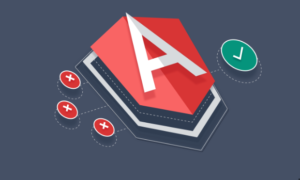Deploying Django applications to Heroku is a popular choice as Heroku provides a straightforward platform for hosting and scaling web applications. Here’s a general guide on how to deploy a Django application to Heroku:
- Set up a Heroku account:
- Sign up for a Heroku account at https://www.heroku.com/.
- Install the Heroku CLI (Command Line Interface) on your local machine.
- Prepare your Django application for deployment:
- Ensure your Django application is properly configured and functional locally.
- Make sure you have a version control system (such as Git) set up for your Django project.
- Create a new Heroku app:
- Use the Heroku CLI to create a new app in your Heroku account:
heroku create. - This will create a new app and provide you with a unique URL for your application.
- Configure your Django application for Heroku:
- Update your Django project’s settings to include necessary configurations for Heroku deployment.
- Set the
DEBUGsetting toFalsefor production. - Configure the database settings to use Heroku’s PostgreSQL or other database options.
- Add any additional configurations specific to your application.
- Create a
Procfile:
- Create a file named
Procfilein the root of your Django project. - Specify the process types and commands needed to run your Django application.
- For example, you might have a line like
web: gunicorn your_project_name.wsgiin theProcfile.
- Set up dependencies and requirements:
- Create a
requirements.txtfile listing all the Python packages required for your Django application. - Generate the
requirements.txtfile usingpip freeze > requirements.txt.
- Initialize Git repository and commit your code:
- Initialize a Git repository in your Django project’s directory, if not already done.
- Commit your code to the repository.
- Deploy your Django application to Heroku:
- Use the Heroku CLI to deploy your Django application:
git push heroku master. - Heroku will receive your code, install the required dependencies, and build your application.
- Set up database and run migrations:
- Run the database migrations on Heroku:
heroku run python manage.py migrate. - This will create the necessary database tables and structures.
- Configure any additional services or add-ons:
- If your Django application requires additional services like email delivery or caching, you can configure and integrate them using Heroku’s add-ons.
- For example, you can use the Heroku Postgres add-on for your database or the Heroku Redis add-on for caching.
- Scale your application:
- Heroku allows you to scale your application by increasing the number of dynos (the containers that run your application).
- You can adjust the number of dynos to handle your application’s traffic and performance needs.
- Test and monitor your deployed application:
- Access your deployed application on the provided Heroku URL.
- Test all the functionality and ensure everything works as expected.
- Set up logging and monitoring to track the performance and any potential issues with your application.
Remember to refer to Heroku’s documentation for any specific details or troubleshooting steps during the deployment process. Additionally, consider using environment variables to store sensitive information, such as secret keys or API credentials, and make sure to configure them in your Heroku app’s settings.
Deploying your Django application to Heroku allows you to easily host and scale your application in a managed environment, with built-in support for various integrations and add-ons.




